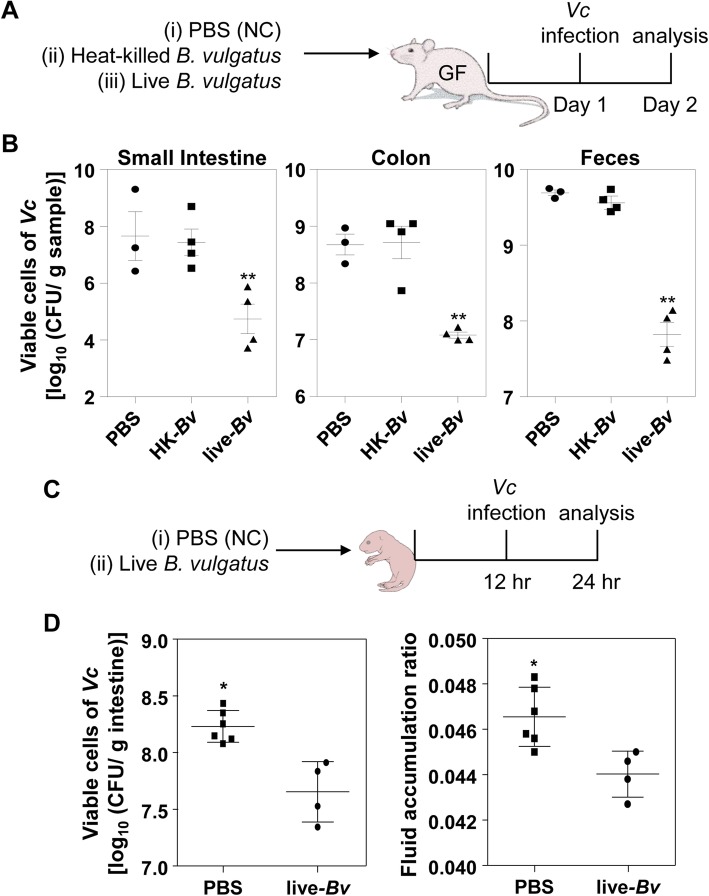Fig. 4.
B. vulgatus inhibits V. cholerae growth in vivo. a Schematic diagram of the experimental procedure. Germ-free mice (C57BL/6, 8~9 weeks old, n = 3 or 4 per group) ingested 50 μL PBS (n = 3), heat-inactivated (autoclaved) B. vulgatus cell suspension (n = 4), or live B. vulgatus cell suspension (n = 4). The B. vulgatus cell suspensions contained 2 × 109 CFU/mL. At 24 h post-association, mice were challenged with V. cholerae infection (5 × 108 CFU) for 24 h. b Viable V. cholerae cells in SI, colon, or fecal pellets were enumerated and presented in log-scale. **P < 0.001 versus bacterial CFU in the control and heat-inactivated Bv groups. c Schematic diagram of the experimental procedure. Five-day-old infant mice (n = 4 or 6 per group) ingested 50 μL PBS (n = 6) or B. vulgatus cell suspension (n = 4). The B. vulgatus cell suspensions contained 1 × 109 CFU/mL. At 12 h post-association, mice were challenged with V. cholerae infection (1 × 108 CFU) for 12 h. d Viable V. cholerae cells in intestinal extract were enumerated and presented in log-scale. **P < 0.05 versus bacterial CFU in the control group. At the end of the infection period, fluid accumulation ratio was calculated by the equation of (intestine weight)/[(total body weight)-(intestine weight)]. *P < 0.05 versus the control group

